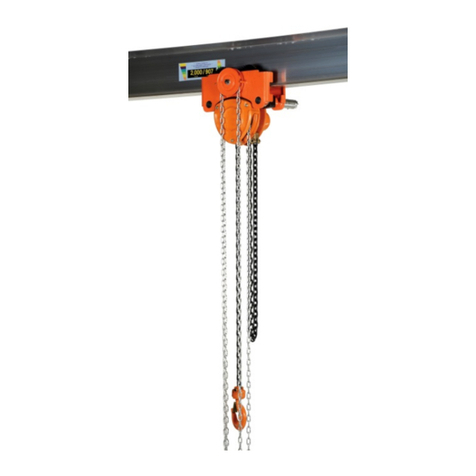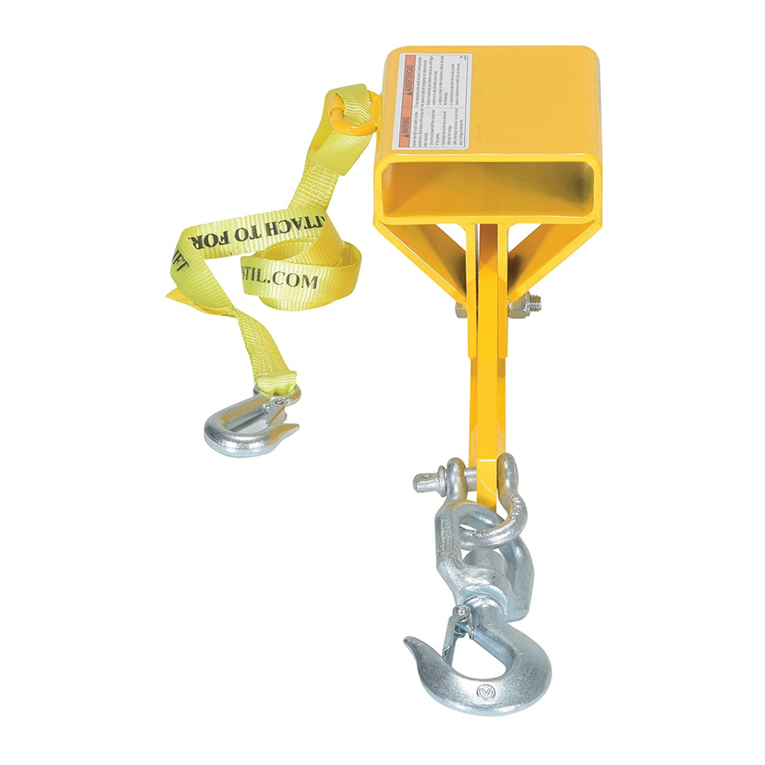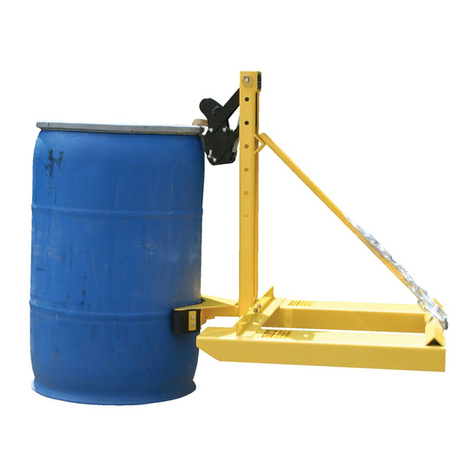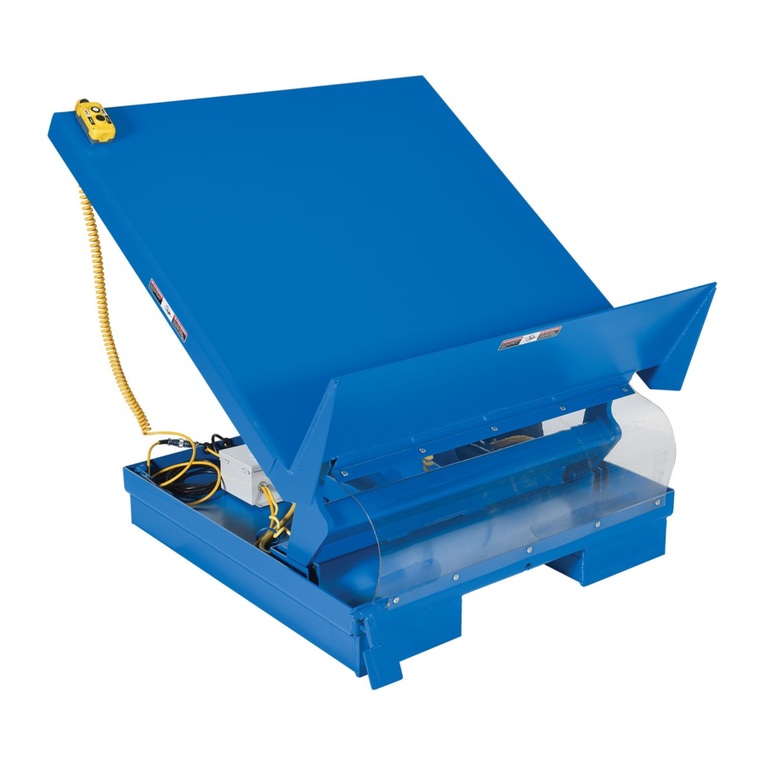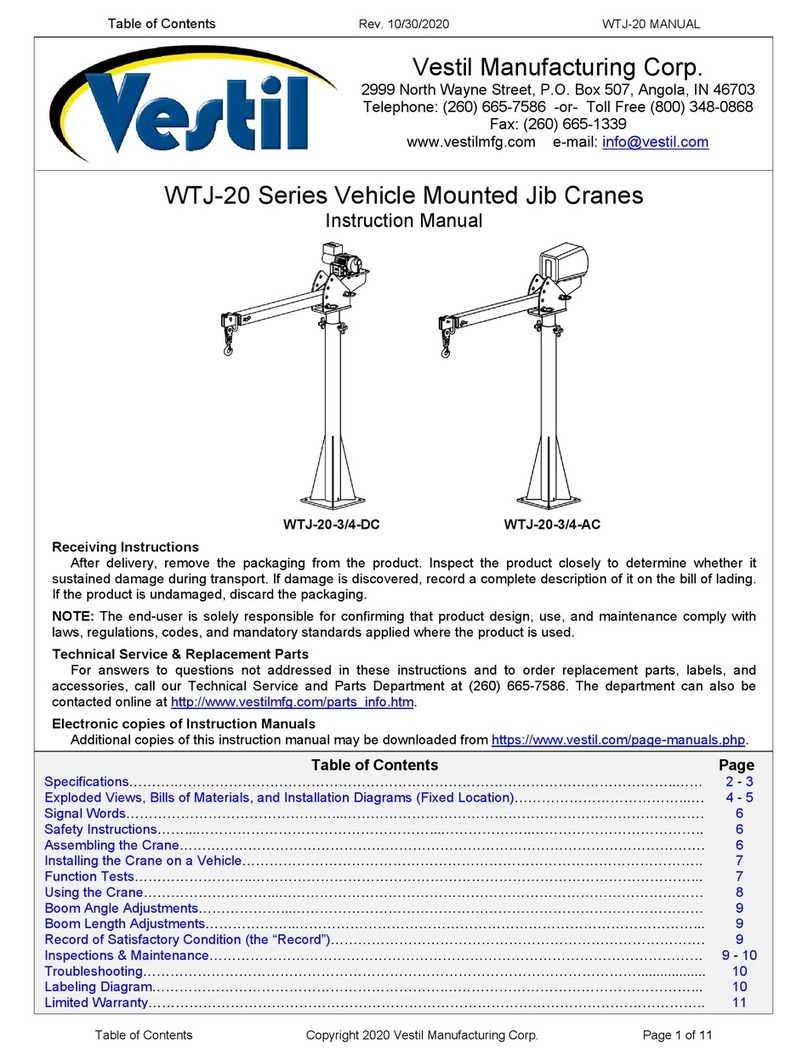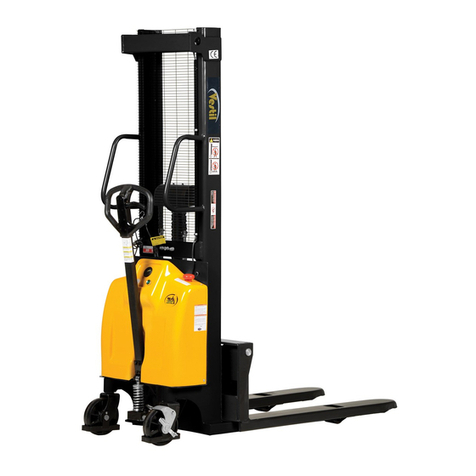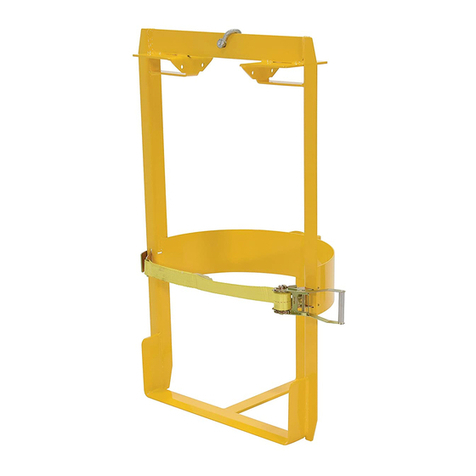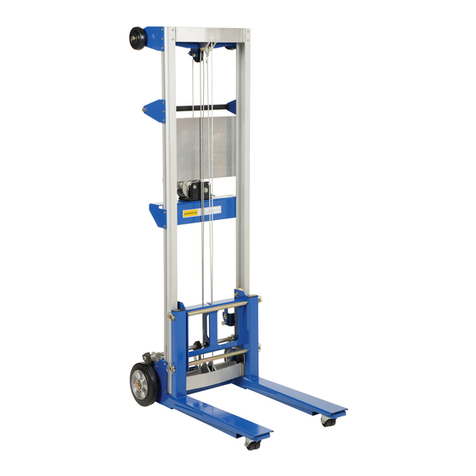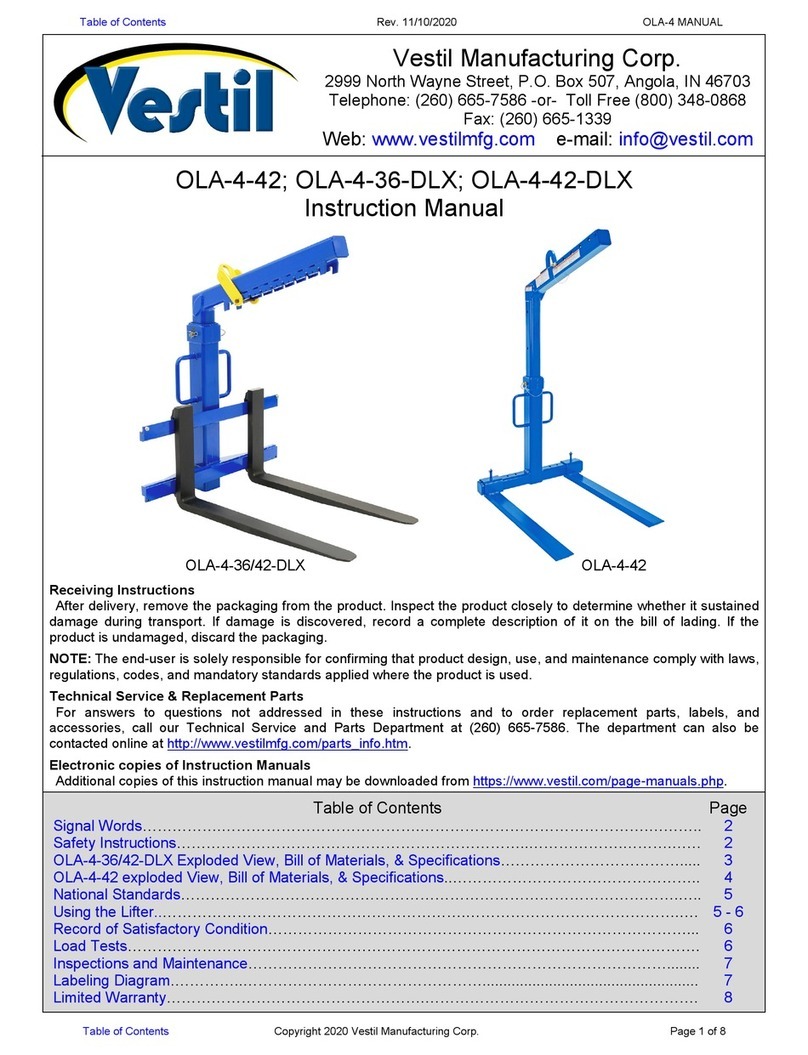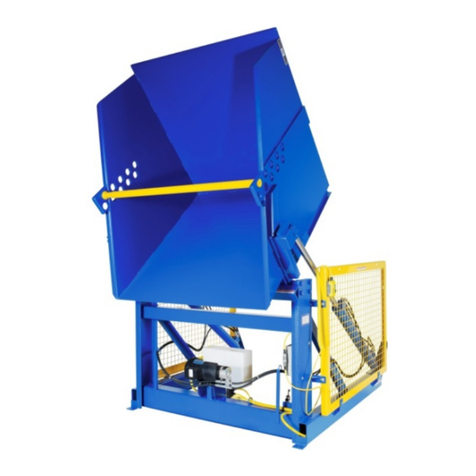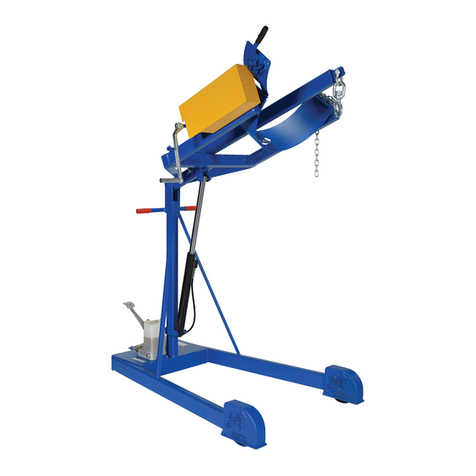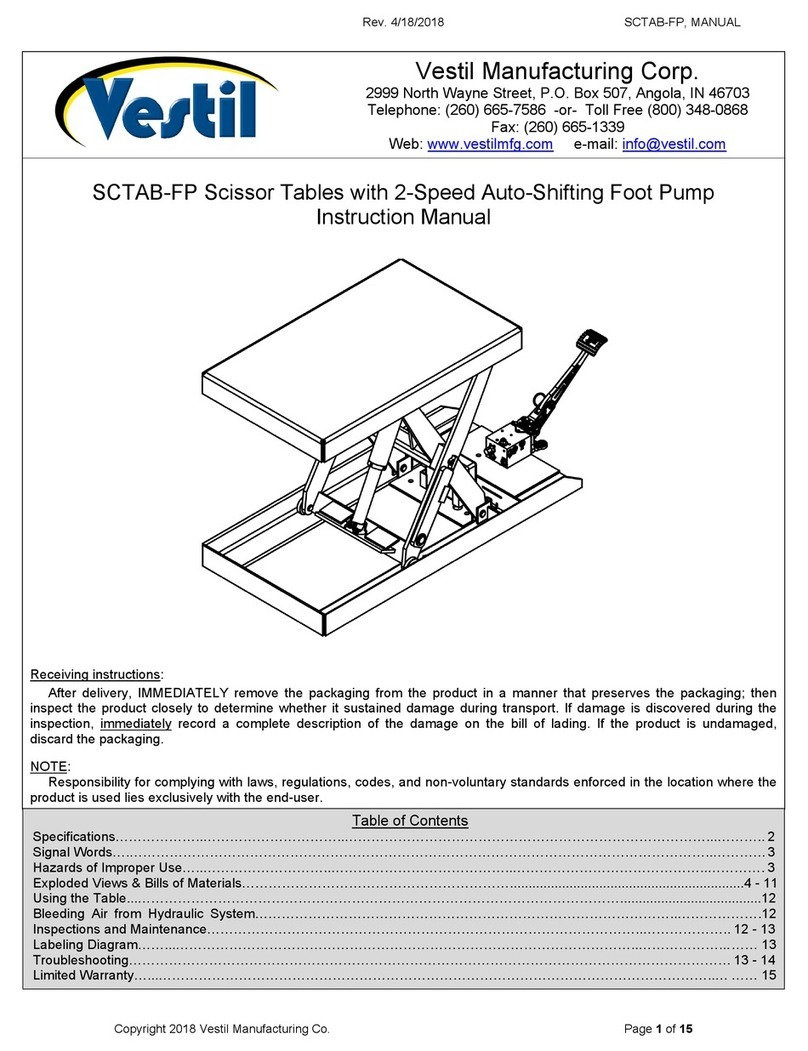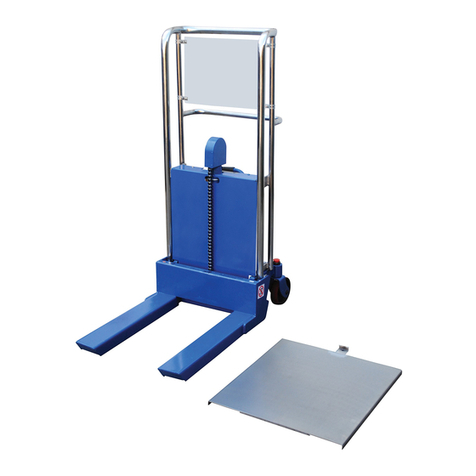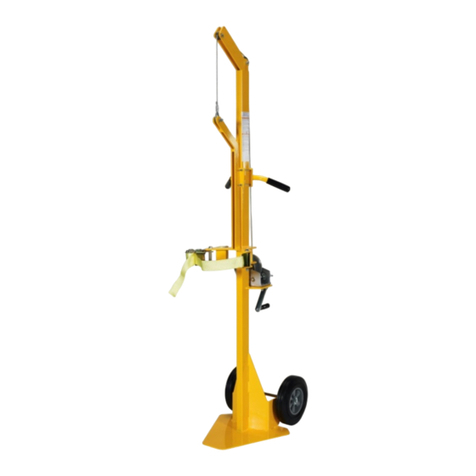
Table of Contents 2/4/2022 HLD MANUAL
Table of Contents Copyright 2010 Vestil Manufacturing Corp. Page 7 of 19
POWER UNIT OPERATION
An electric motor directly coupled to a gear pump pressurizes the hydraulic system. Fluid pressure
causes the lift and tilt cylinders to extend and retract. Cylinder movement performs the work required to
raise and lower, and tilt and un-tilt the chute. A hydraulic manifold bolted directly onto the gear pump
houses the hydraulic control components; each component is rated for 3,000psi working pressure.
Important components of the power unit include:
•Electric motor: Motor voltage and phase (single or 3-phase) was selected at the time this unit was
ordered. Every motor is dual-voltage capable.
•Gear pump: The pump shaft is coupled directly to the shaft of the electric motor. Several
displacements are available that vary with the horsepower of the motor selected.
•Check valve: Prevents backflow of fluid through the pump. Allows the chute maintain position while the
motor is inactive (no signal from the handheld controller).
•Pressure relief valve: While open, the valve provides a path for oil to return to the reservoir. The valve
opens if hydraulic pressure exceeds 3,000psi.
•Lowering solenoid valve: An electrically-operated cartridge valve with an integral screen to keep
contaminants from entering the valve.
•Pressure compensated flow control spool: The spool is located beneath the lowering valve. It governs
the retraction rate of the cylinders and, therefore, the lowering rate of the drum chute. This component
allows the chute to lower at a constant rate regardless of the weight of the drum and its contents.
•Hydraulic cylinders: Displacement style cylinders lift and tilt the chute. Each cylinder includes an integral
bleeder valve located at top end. The valve is used to remove air from the hydraulic system.
•Velocity fuse: Safety device that prevents the flow of oil out of a cylinder if system pressure is disrupted.
A cylinder cannot retract until its velocity fuse is deactivated, i.e. by repressuring the system.
•Hydraulic fluid: HO150 hydraulic fluid. To replenish the fluid, add anti-wear hydraulic fluid with a viscosity
grade of 150 SUS at 100°F (ISO 32 @ 40°C) like AW-32 or Dexron transmission fluid.
SEQUENCE OF OPERATION
Elevate the chute by pressing the RAISE LIFT button of the 4-point controller button. See FIGS. 3A & 3B,
p. 5. In response to the signal from the controller, the motor turns and spins the gear pump. Oil flows out
of the reservoir, through the suction filter and into the pump.
•The pump propels oil through the check valve to the lift cylinder (99-021-912-001 or 99-021-913-001 in the
applicable exploded view).
•An upper travel limit switch turns off the motor when the chute reaches a preset elevation.
•Releasing the RAISE LIFT button immediately halts chute movement. The chute maintains position until a
control button is pressed.
To lower the chute, press the LOWER LIFT button.
•Lowering valve opens and allows oil from the cylinders to bypass the check valve. Oil flows out of the
cylinders to the reservoir through return hoses.
•Releasing the LOWER LIFT button during operation causes all downward movement to stop. The chute
will remain in the same position until a control button is pressed.
To tilt the chute, press the RAISE TILT button. The motor turns and spins the gear pump. Oil is drawn from
the reservoir, through the suction filter and into the pump.
•Pressurized oil flows through the check valve to the tilt cylinder (99-021-909-001 in FIGS. 9-12).
•Releasing the RAISE TILT button during operation immediately halts all chute movement.
•Additionally, an upper travel limit switch automatically turns off the motor when the chute reaches a
preset 40° (mobile units) or 45° (stationary/bolt-down) tilt angle.
To un-tilt the chute, press the “LOWER TILT” button.
•Lowering valve opens and bypasses the check valve, which allows oil in the cylinders to flow to the
reservoir (through return hoses).
•Releasing the LOWER TILT button during operation causes all chute rotation to stop.The chute will
remain in the same position until you press the LOWER TILT button again and allow it to rotate back to
the vertical orientation.
OPERATION ISSUES AND SOLUTIONS
If the chute slowly un-tilts without pressing the LOWER TILT button, or if the chute lowers without pressing
the LOWER LIFT button, the lowering cartridge valve of the affected cylinder should be removed,
inspected, and cleaned.
1. Press the LOWER TILT button until the chute is in home position (lower the chute completely).

